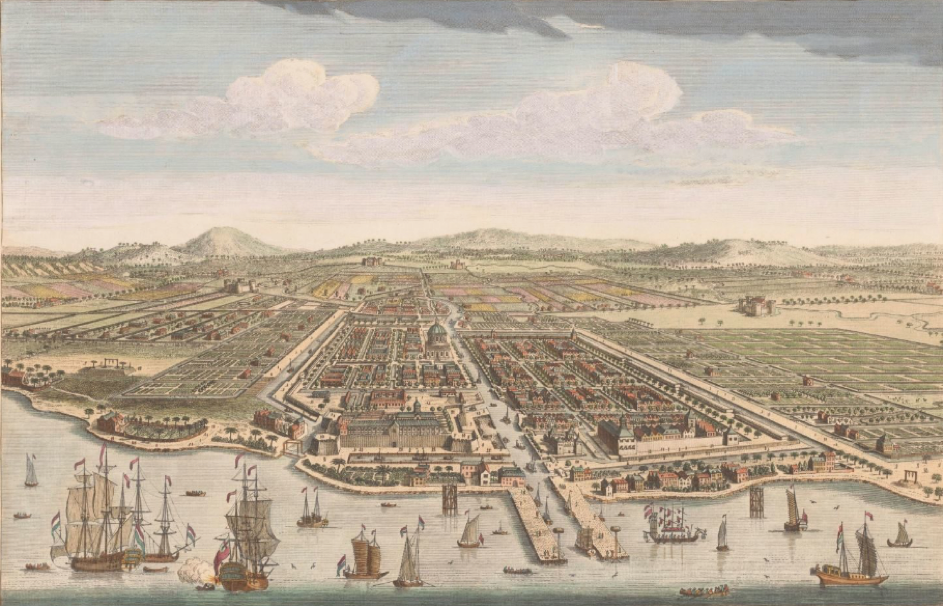A new administrative headquarter: Batavia
By T.M. (Toussaint) Verkoulen
Batavia was the administrative center of the Dutch East India Company from 1619 till 1799. The founding of Batavia by Jan Pieterszoon Coen on the island of Java played a major role in the prosperity of the Dutch trade. Coen saw the need of an eastern capital for the Dutch East Indian Company after their first settlement on Ambon Island in 1610. Coen chose an inhabited harbor on the northern coast of Java that was one of the larger islands. The nearly located mouth of the Ciliwung River was a great source for the supply of fresh water and an ideal location for a harbor connected to the inland. Batavia was (compared to Ambon) more centrally located in the Indonesian archipelago and had the possibility of creating a new urban planning. Thereby they could literally bypass the Strait of Malacca and control traffic passing through the Sunda Strait. Eventually Batavia grew out as an administrative center and warehouse, where goods could be collected and shipped back to Europe.
In the beginning, the residences and warehouses were in the previously established castle of Batavia. Around 1645 the historical center of the city of Batavia (now Kota) was completed. The river had been straightened and the walls surrounded a rectangular area. In the following time the completed walled city expands itself with more walls, streets, canals, and bridges. In the later 18th century, the expansion of Batavia took place mainly outside the existing walls. The population of Batavia began small but initially witnessed an explosive growth during the first decades after its founding. Numbers increased from a mere 8,000 in 1632, to 21,911 by 1699. Between 1700 and 1730 the population within the walls stagnated around 20,000 to 23,000. This stagnation was followed by a steep decline caused by environmental devastation in the so called ‘Ommelanden’ (area near Batavia), and the expansion of coastal saltwater fishponds (tumbaks) near the city that caused more waterborne diseases such as typhus and malaria. Mortality rates could surge to catastrophic levels in the colonial areas due to the collective effect of diseases transmitted through water. More than half of the population of Batavia were slaves. With the ‘Ommelanden’, the Preanger region, Bantam (Banten), Cheribon (Cirebon), and the Northeast coast of Java (Pasisir) together, the island of Java counted around 160.000 western and non-western inhabitants at the peak in the end of the 18th century.

(View of Batavia, Robert Sayer, after I. van Ryne 1754.) source: Rijksmuseum.
Source: J. Veenendaal, "Furniture from Indonesia, Sri Lanka and India during the Dutch period", 1985.
M.L. Kehoe, “Dutch Batavia: Exposing the hierarchy of the Dutch colonial city”, 2015.
M. Vink, “From the Cape to Canton: The Dutch Indian ocean world, 1600-1800”, 2019.
